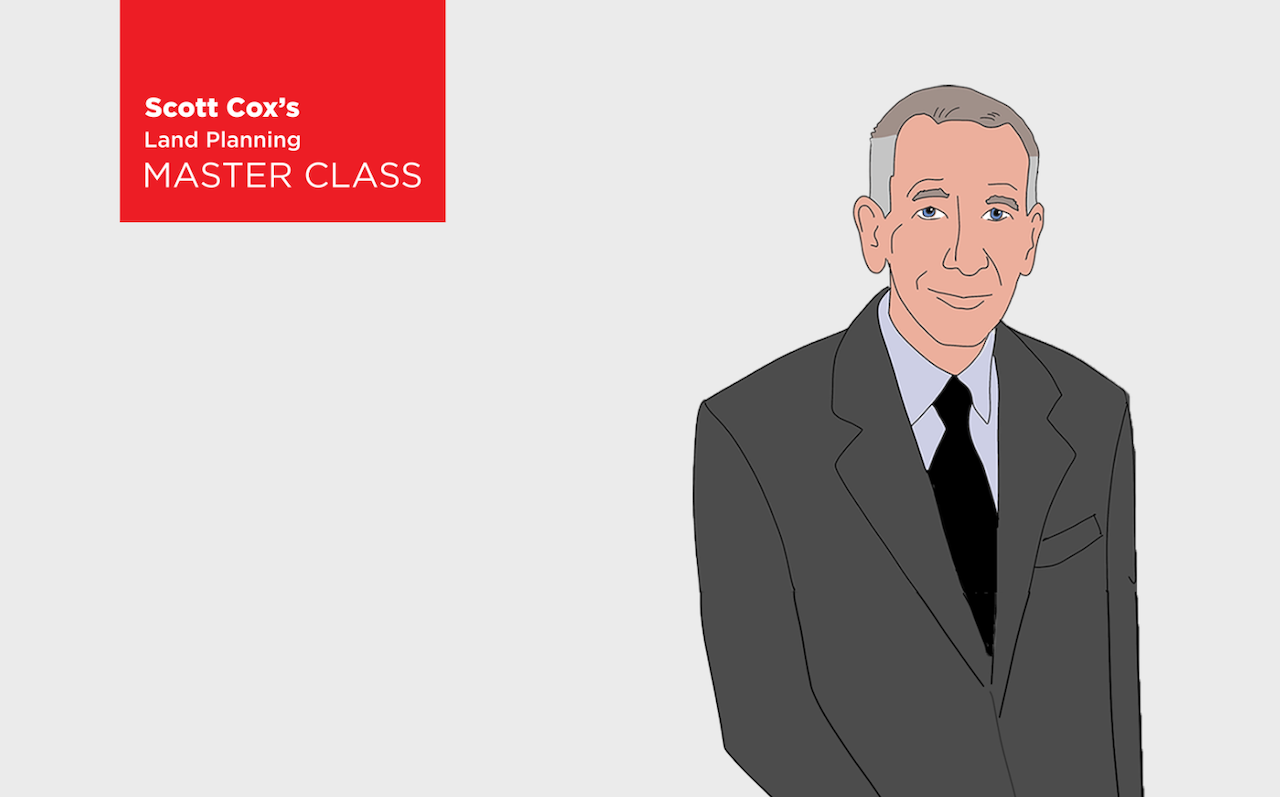Land
The New Math: The 5 Metrics To Get Right For Success In 2024
During the period since the Global Financial Crisis, the underlying math of the homebuilding and residential development business has changed in ways I am not sure has been thought through by all participants.

Our business has changed a lot since the financial crisis, I think sometimes more than everyone realizes. It is easy to get distracted from the changes, given what the last couple of decades have brought – boom, devastating recession, long slow recovery, abject fear when COVID started, a boom as we have never seen, a spike in rates as we have never seen and more fear, and now, an uneasy stability.
The most obvious change has been the trend towards ever more difficult entitlements in almost all markets, and the likelihood that while we can overprice and have corrections, it will be hard to oversupply low-rise housing. Most everyone confronts this and has thought about it to one degree or another. But during this period the underlying math of the business has changed in ways I am not sure has been thought through by all participants.
For many years before the last decade, most homebuilding analysts believed the long-term average profit margin in the business was 7-8% or a bit more, depending on the market and how bad past recessions had been (before our cycles seemed to be national). This has changed quite dramatically over the past decade, at least for the public homebuilders.
Two fundamental changes were made by the publics over the last decade:
Leverage was dramatically reduced, to where most have 25% net debt or less. And that debt is mostly long-term unsecured no covenant bonds. This has two major implications. First, it is virtually impossible at that level of debt to go broke/have to make business decisions solely around cash generation. Second, this has allowed them to load up on land, without loading up on existential risk. When I started in the business 3-4 yrs. of land was considered plenty and you should not go beyond that. Now most own 6-7 years’ worth, half optioned (heading towards 60% optioned or more).
Operations were greatly improved and throughput (per project sales velocity) was more highly valued. Per project absorptions went from 19 per project in 2013, to 42 in 2019 (to say nothing of the boom years). This, along with local scale in general, helped reduce SG&A from 11-12% to 8-9%. Whereas before, the typical 20% GM produced an 8-9% net, now, publics are reporting EBITDA margins of 15-17%. 25-28% GM, less the lower SG&A. Now +25% GMs are probably not sustainable, but it seems reasonable to believe based on long-term supply constraints, it is at least somewhere in the middle vs. the past – 22-23%.
So, 15% EBITDA margins could be normal?
These margins will also help them ride out any problems and mean they can buy land that looks overpriced to a less efficient builder and still make money. So, they do not have to wait for big distress and “steals” to make good returns. Putting a higher “floor” under the land market than in the past? At the same time, by optioning half or more of their land, they have managed to get their assets down to roughly equal with their revenues. Therefore, a 15% EBITDA is a 15% ROA. Which, if your proformas were accurate and your business was stable, means your projects, fully loaded on all costs, would need to produce roughly unleveraged 15% returns.
I can hear many of you saying “I do way better than that.”
Do you? Most builders think they do, but do not. Do you run cash flows at least semiannually on all projects? Do you know if you achieve your projected returns? Few do, who have never dealt with private equity and almost everyone I have ever known was surprised and disappointed after they were forced to do this regularly for the first time. You could sum up most actuals vs proformas with behind schedule, higher costs than projected which led to higher asking prices than projected which led to lower absorption than projected and hence lower IRRs. The culture of our business has an excessive focus on annual company budgets which is a perpetual “do-over” when it comes to project schedules, budgets, and IRRs. Heck, few builders can even map their accounting categories to their cash flow categories.
If your company is not producing 15% ROA, what is the issue? Yes, if you are experiencing rapid growth, that will reduce ROA, but remember the number of publics producing 15% ROA is growing too. It is important to do all this on an unleveraged basis because that is the only way to compare across companies. And it eliminates the “well, their debt is cheaper than mine” argument.
Other metrics to look at:
- Revenue/Employee - $2.4m
- EBITDA/Employee - $400k
- Closings/Employee – 5
- Employees/Community – 9
All these metrics can provide clues if you are not hitting your overall targets. Employees per community fine, but closings and EBITDA not? Probably insufficient velocity. Closings/Employee good, but EBITDA not? Probably building product you are not being paid for? Velocity and margins are solid, but ROA not? Holding land too long? Poor cycle times? The numbers are telling you something if you are willing to listen. They cannot tell you how to fix a problem, but they can tell you what the problem is.
Let us shift gears from company math to project math. Does making 15% EBITDA margins make sense? Consider the components of profit in a home. Assume a $600K home, with a 25% finished lot ratio. That is a $150K lot, and probably $300K of direct costs. What should we make for each part of the work?
Assume $75K to make a lot. If we hired a fee developer who took some cost responsibility (vs simply managing), G&A and profit would probably be 10-15%. Say, $10K per lot. At least.
If we entitled the land, would we do that for less than 33% profit? Probably not. 33% of $75K is $25K.
Does this make sense? I think so. If you add the two profits together, you get $35K, which is 23% of the lot price. I would not take the risk of entitling and developing lots for less and would probably require more.
A fee builder for the directs would require a 10% profit (ignoring reimbursement for G&A as it is already in our hypothetical builder’s costs). So, 10% on $300K, $30K.
How much for market risk? Well, a land banker would charge us 12% compounded to hold our land, so the cost would vary based on the carry period, but easily $20K per lot. Side note – if your ROA is 15% or more, you are happy to pay someone 12% to hold your dirt. If your ROA is less than 12% …
How much to guarantee debt? 2% guarantee fees from investors in deals are not uncommon, so assuming 75% on the $600K, is $450k x 2% = $9k (if based on commitment).
So, without getting paid for managing sales, marketing, accounting, etc., we need $94K in profit. That is 16%. Exactly what the public builders are achieving. You can quibble with any one of these components, but I think these figures verify what might be the “new normal” in required margins. This then leads to the question, what parts of the business do we make money at, and which parts do we not? Do we want to fix those we do not, or choose to exit them to concentrate on what we are good at?
There are only five things you must get right to make strong returns in this business:
- Buy the land fairly (it does not have to be a steal) and at a price that is right for your business. Not all good land is good for your business.
- Create the appropriate land plan and product for the intrinsics of your site. Not too much, not too little.
- Execute. Cycle times, schedules, budgets.
- Price to market for velocity. Not to proforma or need.
- Do not over-leverage.
Everything else can add to your success, but without these five you can do everything else perfectly and not do well. Over time, I have become convinced that with rare exceptions, strong returns require tight cycle times and strong per-project absorptions. There is no substitute for throughput. A part of that is local scale, which means more than national scale (other than cost-of-capital advantages).
The adage was – historically – price to margin. Perhaps once true, one could argue the point. But in a time when the business has gotten more complicated and needs more sophisticated (and expensive) management, it is a recipe to produce decent gross margins and poor net margins and return on capital. Price to velocity will lead to better company financial results.
It’s just math.
MORE IN Land
We Engineered This Housing Crisis — It Didn’t Just Happen
Metro housing policy has become a self-defeating maze. The Builder's Daily contributor Scott Cox helps us with data, wisdom, and courage to map the math, myths, and real path forward.
Lone Star Diamond In The Rough: A Case For 'Why Weatherford'
Longtime Texas residential land strategist Scott Finfer opens up his land scouting manual to explain the stark difference between speculation and data-backed, applied vision.
Little Deal ... Big, Timely Product Pivot: Lokal’s Capital Play
A $12M facility fuels Lokal Homes’ swift shift into higher-margin homes and a smarter land strategy in a tough market.
